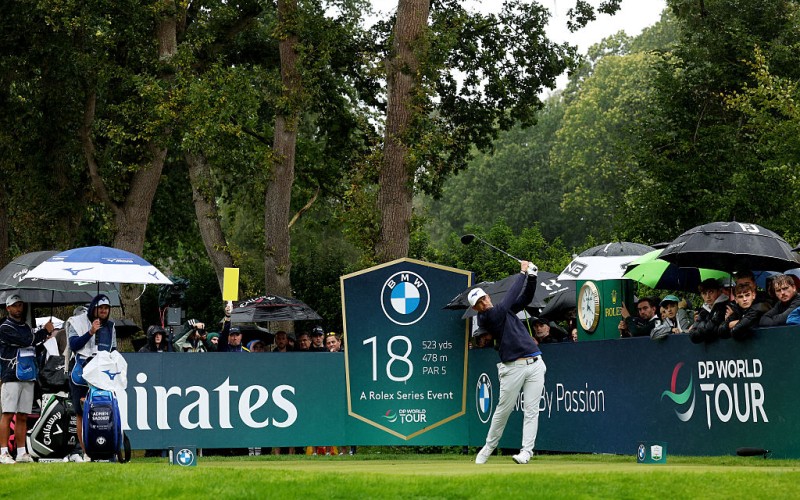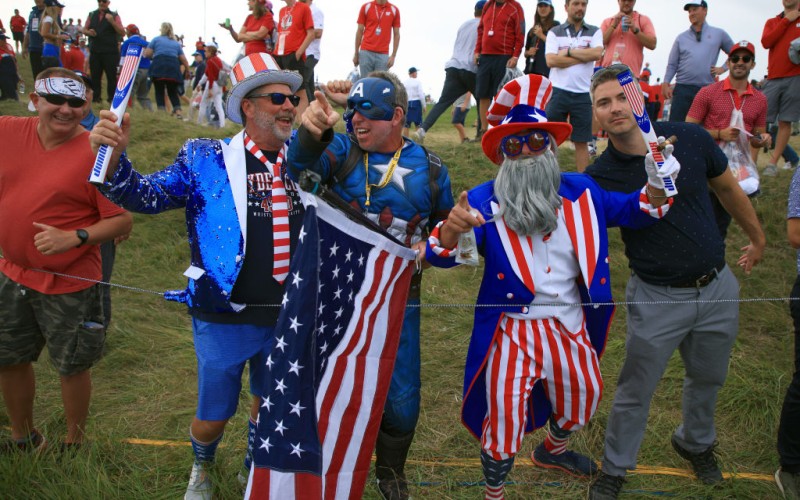To win at Augusta you’ve got to be red-hot with your short game and there’s plenty of talent at the top level – and they practise chipping and pitching so often that they wear the grooves out on their wedges so much that they have to put a new set in play every six weeks.
I spent three weeks coaching my players in Florida at The Honda Classic, Arnold Palmer Invitational and The Players at TPC Sawgrass and I won’t be going back to the States until just before The Masters.
Brooks Koepka and Matt Fitzpatrick both had runner-up finishes at The Honda Classic and at Bay Hill, respectively, but nobody’s pulling up any trees at the moment. With Henrik Stenson, I had to have a big heart-to-heart conversation with him after his opening round 77 at Bay Hill. He bucked up his ideas and shot a 66 and could have finished in the top ten had he not bogeyed the last two holes on the Sunday. If you discount his opening round he would have won the tournament over the last three rounds – but that’s not much good once you’ve signed for a 77!
I spoke briefly to Rory McIlroy on the range at Sawgrass and he said he was getting there and his game felt good. He’s such a quality player when at his best, one of the best in the world – if not the best on his day. Winning The Players will put him in a great frame of mind heading into The Masters because it’s one of the toughest tournaments to win.
Tiger Woods vs Rory McIlroy for the first time in matchplay at 1:30pm UK. I'll be hitting play on this classic Nike advert at 1:28pm… pic.twitter.com/terqy3Ra7z
— Stuart Fraser (@stu_fraser) March 30, 2019
Augusta, like most years, is a case of picking out the usual suspects, but then I didn’t expect Patrick Reed to win it last year. To win at Augusta they’ve got to have a bit of luck on their side and they’ve got to be good chippers. Patrick Reed is one of the best chippers out there, without a doubt. Look at some of the recent past winners – they’re all great chippers. Zach Johnson is an impressive chipper, as is Tiger Woods with four wins and Phil Mickelson with three wins.
The top players use their wedges a lot because chipping and pitching is so important. My guys change their wedges about every six weeks, mostly due to wearing the grooves down. I like what TaylorMade do with their interchanging faces because a good wedge player wears the sole down to the way they want it to be worn, through usage over time. But if you’re changing wedges so often it can be difficult to get the identical sole configuration. It takes a while – and by the time you’ve done it the grooves are worn down again. It’s a bit of a nightmare and that’s why a lot of companies are trying to make sure that their wedges are identical when they build them. If you’re grinding the soles, then you can’t guarantee them to be identical.
I sometimes get Roger Cleveland at Callaway to grind them, personally, for my players. I’ll tell him the spec and he’ll do it.
The old Cleveland wedges – the 588 – back when Roger used to work for Cleveland, were the best. I spoke to him at Bay Hill and he’s got some new wedges coming out soon, which he can’t wait to show me. I don’t do an awful lot apart from giving my feedback.
Keegan always makes sure to fit in short game practice with his #RTX4 wedges. Tell us what type of shots you're working on? #ClevelandGolf pic.twitter.com/G64E0Kq1I1
— Cleveland Golf (@ClevelandGolf) April 3, 2019
When my players wear the grooves down there’s not much point in re-grooving them, unfortunately. Years ago, before it was policed more than it is now, players had groove tools and they used to be so sharp to make the ball spin. Nowadays it’s easier to replace the club once the grooves are done, rather than risk regrooving them too deep and getting into trouble for it.
From an amateur perspective the development in wedge technology has helped players hit their shots better. The different bounce and loft options have given players more scope to get it right. Having said that, I’d like to see professionals restricted to a maximum of 56° of loft so it forces them to improve their technique. It should be different for amateurs, and they should be allowed 60° wedges so they can get the ball in the air easier.
On a separate note, amateurs should be allowed to use long-handled putters. Many ageing players who have stopped playing because they can’t hole a 3-footer anymore. With the long-handle they could knock in the putts and enjoy the game.
At the professional level I’m against players anchoring the putter shaft into their forearms. The rules state it can’t be anchored above the elbow, but even having it pressed against your forearm takes some of the nerves away. Nerves come into putting – it’s what it is all about. Top level sport is about pressure and nerve and who can deal with it best, and the putter should be free to swing.












